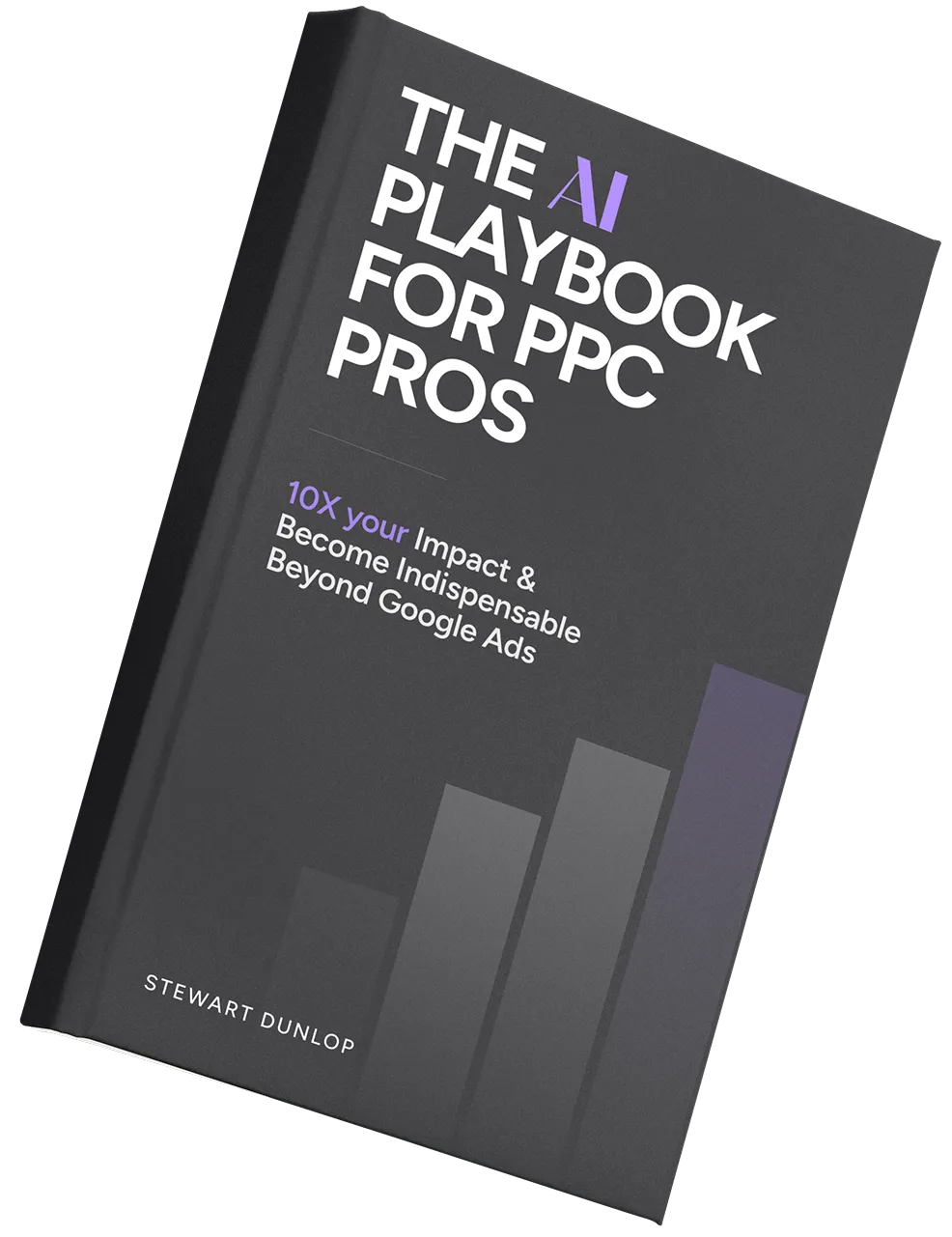
In our opinion, there’s one metric that stands above all others when it comes to measuring PPC campaign performance: Return on Ad Spend (ROAS).
This shows you how much money each dollar you spend on an ad campaign generates in sales.
It’s basically ROI but specifically for ads. And it’s the best way to see if your campaign is profitable so you get the most from your PPC budget.
How to Calculate ROAS?
Calculating ROAS is relatively straightforward. Just divide the total revenue generated by your campaign or ad by the total amount you spent.
ROAS Formula
Revenue / Cost of Ads = ROAS
Here’s an example of a ROAS calculation:
Imagine an ecommerce store that sells sneakers via paid search. Over two months it spent $1,000 on ads, bringing in $3,000 of sales.
The ROAS for the campaign looks like this:
$3,000 / $1,000 = 3
The ads had a ROAS of 3:1.
You may find it easier to display ROAS as a percentage. You can do this by multiplying the result by 100.
So:
3 x 100 = 300%
It means that for every $1 the company spent on ads, it brought in $3.
This seems like a great result, so it must mean it’s time for the company to invest more in ads.
Well, it’s not quite that simple.
Other Considerations When Using ROAS
The ROAS calculation above only considers the costs of paying for ads.
But most businesses have other costs that will influence whether a campaign is profitable or not.
The seller will also have to pay for:
- Design
- Manufacturing
- Salaries
- Other marketing costs
- Rent
- Shipping
- Research
It’s only by calculating the profit margin of your item that you can really know if a campaign was successful or not.
Let’s go back to the sneaker seller example we used above.
If the company has a profit margin of 50%, the campaign will still have made money. It will generate $1,500 on advertising spend of $1,000.
But if the profit margin was only 25%, the company will have lost money because it spent $1,000 to generate only $750.
This is the case even though the company has a positive ROAS.
So how can you avoid losing money when paying for ads?
You Need to Calculate a Target ROAS for Your Ad Campaign
To ensure your ads campaigns stay profitable, you need to calculate a target ROAS and make sure your campaigns hit this number.
Just calculate the ROAS you need to aim for to bring in more than you spend. Anything above this means your campaign is profitable.
Calculating target ROAS is easy. Just divide 100 by your profit margin.
100 / Profit Margin = Target ROAS
For example:
If the sneaker seller’s profit margin is 50%, it needs to hit the following ROAS to be profitable:
100 / 50 = 2
So the ad or campaign needs to hit a 2x (or 200%) return to be successful.
If the sneaker seller’s profit margin is 25%, ROAS needs to be higher.
100 / 25 = 4
It needs to hit a 4x (or 400%) return.
As you can see, the more profitable your item the lower your ROAS needs to be. This opens up opportunities to generate more sales by bidding on less profitable keywords.
Setting Your ROAS Target
It’s possible to set a target ROAS from within Google Ads.
If you use one of Google Ads’ Smart Bidding strategies, the company will intelligently predict the value of potential conversions and then try to hit your target.
The algorithm will adjust its bid values based on how likely it thinks a user is to convert.
To set this up, you need to set values for each conversion. This tells Google how much each conversion is worth to you. It will then use this information to calculate ROAS.
P.S. You can check out what the average Google ads conversion rate is by industry.
Remember that if you set your target ROAS too low, the algorithm may not be able to reach your target and you won’t generate any sales.
Manually Set Up Conversion Value
Setting up conversion values manually is beneficial for sites that only sell a single product. Or those that sell multiple products at the same price. In this case, each conversion has the same value.
It is also helpful for online advertising campaigns that use ads for lead generation. Imagine a company that sells a $1,000 e-learning course and uses a free webinar to attract potential customers.
The free webinar conversion doesn’t generate any money.
But if the company knows that an average of 10% of the people who sign up for the webinar end up paying for the full course, it can set its conversion value at $100.
What If Conversions Have Different Values?
The calculations become more complicated if your store has a variety of products at multiple price points.
In this case, the value of each conversion can vary. If the sneaker site sells different kinds of footwear, as well as accessories like socks and t-shirts, each conversion is likely to have a different value.
One way to get around this is to calculate your average basket value and set this as your conversion value in Google Ads.
A better option is to set up transaction-specific values. If you do this, Google will track the exact value of each conversion—helping you accurately predict your return on ad spend.
It will know when someone buys sneakers for their entire family, resulting in a conversion value of hundreds of dollars.
And it will also be able to tell when someone simply buys a pair of socks with a conversion value much lower.
Some ecommerce platforms like Shopify make this type of tracking easy to set up. However, if you run your own platform you’ll have to set it up yourself.
How ROAS Compares with Other Popular Metrics
ROAS isn’t the only marketing metric you can use to measure the success of your marketing campaign. Here is a look at the difference between ROAS and other standard metrics.
ROAS vs. CPA
Cost Per Action (CPA) is another metric commonly used to calculate the success of an advertising campaign.
It shows how much you spent on ads to generate the action you are measuring.
Let’s go back to the example of the sneaker seller. If each pair of sneakers cost $150, earning $3,000 of revenue means it sold 20 pairs of shoes.
That means the $1,000 of ad spend resulted in 20 conversions.
By dividing the $1,000 ad spend by 20 you can see that the cost per conversion is $50.
But problems arise if you sell multiple products at different price points. That’s because CPA doesn’t show you how much revenue each conversion generated.
Imagine the seller also promotes a pair of sneakers that cost $75. These campaigns could have a lower CPA, but because the sneakers cost less each conversion will also generate far less revenue and profit.
This means that you can only truly judge the profitability of a campaign by considering your ROAS.
ROAS vs. ROI
Where ROAS looks at the amount you spend on an ad platform to generate results, ROI considers every dollar spent on running a campaign.
It factors in things like the advertising costs, the cost of hiring staff or an agency to run the ads, and the cost of the PPC software you use to manage campaigns.
ROAS vs. CPC
Cost per Click (CPC) shows the average amount you pay whenever someone clicks on one of your ads.
It can be tempting to think that campaigns with a high CPC are costing more than necessary. But it typically costs more to advertise on high-value keywords.
This means that a high CPC can often correlate with a high conversion rate. These campaigns can be profitable despite the high cost of each click.
How to Use This Information
Once you know how to calculate ROAS and your ROAS target you can look at each ad, campaign, channel, and even keyword to get a better idea of which ones are actually performing.
You may have campaigns that are generating a ton of clicks and revenue that appear successful but are actually only just breaking even.
In this case, you could test ways to increase the ROAS of these campaigns. A slight increase in ROAS on a high-volume campaign can lead to big profit increases in your future advertising efforts.
Consider taking steps to improve conversion by improving your landing page, or experimenting with ways to increase your average basket size.
On the other hand, you may have keywords that aren’t only generating much cash, but that are very profitable.
In this case, you can look for similar opportunities to increase your campaign’s overall profitability.
Are You Struggling to Keep Your Campaigns Profitable?
Getting a positive ROAS isn’t always easy, but we're building the ultimate suite of AI tools for PPC professionals to help them achieve a much better return on their PPC investment. have a track record of generating results for our clients. Get in touch to see how we can help.

